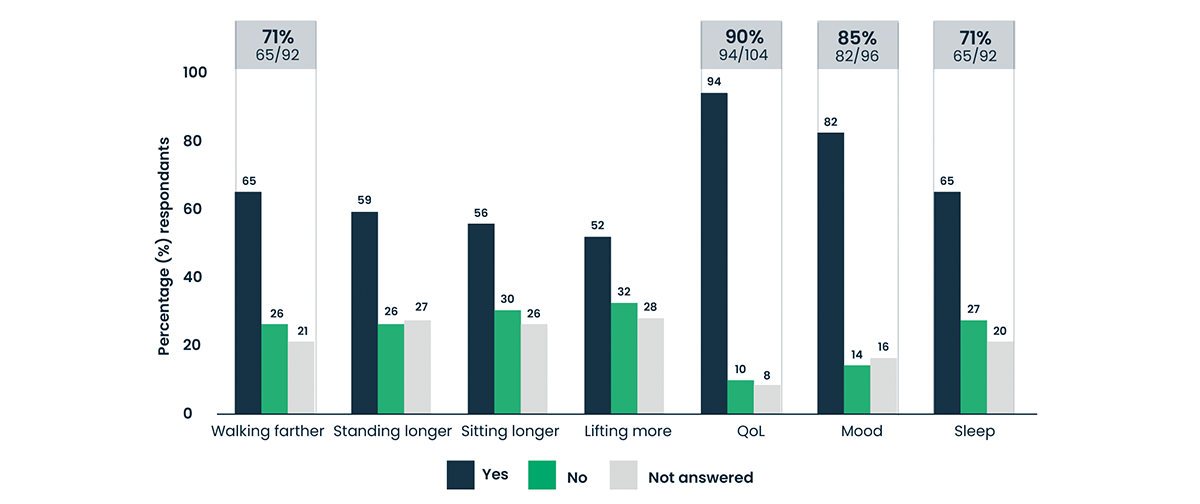Rheumatoid arthritis can be a total pain (literally and metaphorically). In this article, we’re going to take a look at the top 11 tips for managing rheumatoid arthritis and how you can make some adjustments to your daily routine to help.
While there are medicines available that can treat, but not cure, rheumatoid arthritis, there are other ways of helping yourself cope with the condition. This can be even more vital if you don’t respond to the medicine (or have unpleasant side effects) and can generally improve your quality of life.
1. Don’t smoke if you have rheumatoid arthritis

As you may know, rheumatoid arthritis is an autoimmune condition, which means that your own immune system attacks you. In this case, it attacks your joints, which can make them swollen and painful.
The causes are not fully understood, but one of the known risk factors is smoking. What’s more, it can also make symptoms worse once you have the condition, so we really encourage you to look for ways to quit.
We know it’s not easy, but fortunately, there are loads of tools to help you with this, including from the NHS if you’re in the UK.
As an added bonus, quitting smoking will make it easier to stay active, which is one of the best things you can do to help manage rheumatoid arthritis and its symptoms!
It also lowers your risk of heart disease and several other conditions that rheumatoid arthritis makes you more likely to suffer from, which we’d say is a double whammy.
2. Watch your weight
Keeping portions small and your eyes glued to the scales isn’t really anyone’s ideal pastime, so we sympathise with how you may feel when we say that one of the other main ways to manage rheumatoid arthritis is to maintain a healthy weight and lose weight if necessary.
It’s quite surprising the various ways that being overweight or obese can affect rheumatoid arthritis. For a start, fat cells can worsen joint inflammation in rheumatoid arthritis by releasing certain chemicals. Studies have also shown that, if you are overweight, slimming down can lower the rate at which your rheumatoid arthritis progresses - losing at least 5kg makes you three times more likely to improve your condition.
Beyond that, being overweight puts extra strain on your joints, making those already painful areas even more painful, and increases your risk of other conditions like diabetes and heart problems.
3. Exercise, exercise, exercise

It’s hard to overstate the benefits of staying active when you have rheumatoid arthritis.
Along with all the other benefits that are usually mentioned for exercise (heart, lungs, etc.), it helps reduce inflammation, strengthen bones and muscles, improve joint mobility, and even provide some pain relief.
We know it can be hard to get started sometimes, or you might be wondering what exercises are suitable for rheumatoid arthritis, so we’ve compiled this guide on ways to stay active with arthritis.
4. Rest when you need to
Rheumatoid arthritis flare ups are a particularly unpleasant part of the condition, as they can be unpredictable in when they’ll appear and can get in the way of everyday activities.
It’s important to know your limits and rest when a flare up occurs or you experience sharp pain and discomfort. Although you may be able to exercise during these periods, we recommend that you consult your doctor first, as they may suggest a more basic set of exercises like simple stretching.
Resting can help relieve pain and inflammation and get you back to moving around quicker than if you just push through it.
5. Address symptoms directly

Medication is a central part of managing rheumatoid arthritis, and rightly so. With no cure, it’s vital to slow the progression of the condition and maintain quality of life.
Many of the drugs used to treat rheumatoid arthritis will go some way to alleviating the main symptoms like inflammation and therefore pain, as well as preventing further damage to your body. However, as with many conditions, you may sometimes still feel pain and suffer from inflammation despite your medication.
Many of the points we’ve mentioned so far are for a more long-term outlook, but during a flare up, or when you’re particularly feeling the pain and stiffness, there are some other options you can turn to.
Taking a warm bath or using heat packs can relieve stiffness, while using cold packs can reduce swelling and dull pain.
A particularly effective option you can turn to is bioelectronic therapy. This uses gentle electrical stimulation - you don’t even feel it - to help you manage pain and inflammation. Bioelectronic technology has a range of different ways that it can help, of which microcurrent stimulation is one of the main types.
A great advantage of this type of therapy is that it’s drug free and extremely easy to apply and use when you need it.
Don’t just take our word for it - have a look at the results from this survey and hear from others about how it improved their quality of life; 98% of them recommend using this bioelectronic technology!
6. Avoid stress as much as possible

Easier said than done, that’s for sure.
Exactly what causes autoimmune diseases is not clear. However, researchers have suggested that stress - both physical and psychological - could be a contributing factor.
The effects of stress on rheumatoid arthritis are documented. When stressed, your body releases more of certain chemicals, including ones that can make inflammation worse. Of course, this is particularly problematic for rheumatoid arthritis as the inflammation of your joints is what leads to damage.
Extended periods of stress (and whatever may be causing that stress) can make it harder to sleep and exercise, both of which are important for managing your arthritis.
So what can you do?
Rest and exercise are both good ways to stave off stress. Exercise releases endorphins, which make you feel better, while we’re sure you already know that rest can help with stress. Beyond that, consider your support network and how they can help you deal with problems that might arise or talk to them about things that trouble you.
If there is something more serious, or you would rather talk to someone else instead, then why not see a therapist? They can help you work through issues that contribute to stress.
We’ve got more tips on how to deal with stress over here.
Nifty tips and tricks
The next few are focused more on little tips and tricks you can employ at home or work, rather than big, overarching lifestyle changes.
7. Make everything wheel-y simple
Carrying heavy objects around is, as you might have experienced, really not a great idea for rheumatoid arthritis as it can put extra strain on joints. Instead, find other ways to move things around. For example, having a small trolley that you can slide things onto and off, or at least only lift briefly, can make a big difference in the home. You could even have ones of different heights and sizes for different areas and tasks.
When you go on holiday, take a suitcase with wheels. If you would rather push it than drag it then make sure to get one with four wheels instead of two, although you then have to beware it trying to run away from you on ramps!
8. Take a seat

Standing for long periods can be painful with rheumatoid arthritis. Think about all the activities you do while standing for a while and whether you can make adjustments so you sit instead.
In the kitchen, try and get a stool - maybe one of those extra tall ones that you sometimes see at bars - that will allow you to sit at a comfortable height to chop, stir, or whatever else you’re up to.
The same goes for gardening, though obviously with a lower seat - we doubt your arms are long enough to reach otherwise!
If you’re going somewhere, such as the museum or park or anywhere you might have to queue, then you could take a collapsible stool with you. It also works well on the links if you have to wait for the players in front of you.
9. But don’t sit (or hold one position) all the time
We did just tell you to sit when you can, but remember that being in the same position for a long time can be just as problematic, even if it’s a restful one like sitting. Whether you’re in the office or at home, get up and move around a bit every so often if you can and perhaps even do some stretches. This is especially important if you are travelling a long distance - don’t be afraid to get up and walk around the train or aeroplane, or to get out of the car at suitable places.
10. Technology and gadgets are your friends

There are many devices that can make everyday tasks easier. A blender or food processor can chop vegetables with the push of a button. Headsets and earphones can free your hands when talking on the phone and prevent trying to hold it between ear and shoulder.
There are also ranges of common objects with modifications specifically to make them easier to use for people with arthritis and other conditions. These include pens and hairbrushes with bigger grips, shower chairs, and shower heads with adjustable grips.
Your doctor may be able to help you with some recommendations.
11. Preparation is half the battle
With any chronic condition, you will probably have a good idea of what sorts of activities you might find difficult, what will take longer, and what will make you more tired.
Bearing these in mind, it can help to plan your days so that you do the most difficult things when you have the most energy, whether that be mid-morning, early afternoon or whenever. If it takes a bit of time to get ready in the morning (stiff joints can slow things down), then don’t be afraid to put things off until later if you can.
You can apply these same principles to preparing various tasks. At the weekend, having a whole day available could make meal prepping a way to save time and effort during the week when you are more tired. You can also split up some tasks over multiple days or sessions.

We hope this has helped you with some ideas for how to manage rheumatoid arthritis. We know that some days are much harder than others, but we’re confident that you can do it.
If you have any tips or ways that have helped you, let us know



